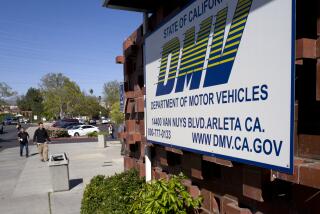Teens and Driving : Sensible proposals to reduce the highway carnage
- Share via
In the 1980s, under pressure from the National Transportation Safety Board, states moved to raise the minimum legal age for buying alcohol from 18 to 21. Soon auto accident and death rates among teen-age drivers began to fall dramatically. Underage drinking by drivers nonetheless remains a major problem. Last week the board reported that a fatal road accident involving a teen-age drinker occurs every 57 minutes.
People between 15 and 20 hold 7.1% of the nation’s driver’s licenses but account for nearly 15% of all driver fatalities. Teen-agers do only about 20% of their driving at night but half of the road fatalities they suffer occur after dark. In 1991, about 30% of teen-age drivers killed on the road tested positive for alcohol.
Eight states now have laws limiting nighttime driving by teen-agers. The safety board proposes that all states adopt curfews for these drivers, especially between midnight and 5 a.m. for “novice drivers,” primarily inexperienced 16- and 17-year-olds, who have twice the fatality rate of older youths. The board further proposes setting a zero blood-alcohol tolerance level for teen-agers, so a youngster who had anything to drink would face license suspension or revocation.
California, which leads the nation in registered vehicles, teen-age drivers and road fatalities, ought to adopt these worthwhile proposals. Some exemptions might of course be needed; for example, some teen-agers might set off for work or school before 5 a.m. For the most part, though, a driving curfew for 16- and 17-year-olds and a 0.0 blood alcohol standard are realistic aims. Many teen-agers will complain. But their parents--and other drivers--will have reason to be relieved.
More to Read
Sign up for Essential California
The most important California stories and recommendations in your inbox every morning.
You may occasionally receive promotional content from the Los Angeles Times.










